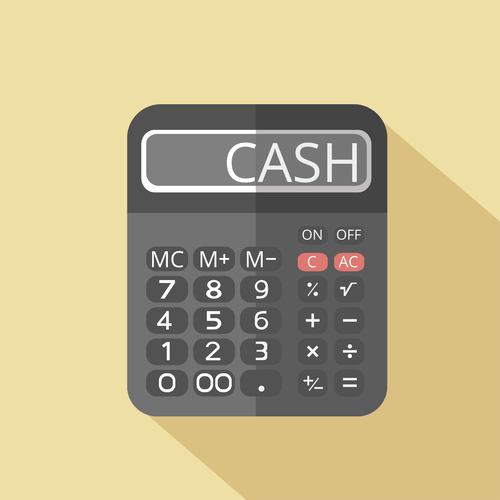The matching principle is an accrual accounting concept that requires a company to recognize expense in the same period as the related revenues are earned. If a company expects that an asset will contribute to revenue for a long period of time, it will have a long, useful life. Determining the value of a car that has been salvaged isn’t an exact science, but you can use various calculations to reach a close estimate. You’ll determine the value before salvage, figure out the insurance company’s rates and reach a final figure.
The declining balance method accelerates depreciation by applying a higher percentage rate to the asset’s book value each year. If the asset is sold for less than its book value then the difference in cost will be recorded as the loss of the tax values. In this situation, the salvage values calculated are less than the book value. If it is too difficult to determine a salvage value, or if the salvage value is expected to be minimal, then it is not necessary to include a salvage value in depreciation calculations. Instead, simply depreciate the entire cost of the fixed asset over its useful life. Any proceeds from the eventual disposition of the asset would then be recorded as a gain.
Recent Calculators
Knowing the salvage value of your vehicle is important to ensuring you get a fair settlement from your insurance company, especially if you intend to retain the car and repair it. An unfortunate part of driving is the possibility of a collision that’s severe enough to write off your car as a total loss. While the most important concern in any collision is the safety of all the involved parties, you’re bound to be concerned about your damaged car. If your car is irreparable or the cost to repair your car is close to the value of the car, it’s possible that it will be deemed a total loss. Residual values are also called break-up values, scrap values, and salvage values.
How insurers calculate taxes and fees when your car is totaled … – Washington state Office of the Insurance Commissioner
How insurers calculate taxes and fees when your car is totaled ….
Posted: Wed, 22 Mar 2023 09:17:24 GMT [source]
When an asset or a good is sold off, its selling price is the salvage value if tax is not deducted then this is called the before tax salvage value. The salvage value calculator cars and vehicles is useful when how to calculate salvage value you are suspicious about the price of the car while including the depreciation of the asset. The salvage price of the asset and scrap value calculation are based on the original price and depreciation rate.
Need Help With Your Car?
GAAP says to include sales tax and installation fees in an asset’s purchase price. A salvage value of zero is reasonable since it is assumed that the asset will no longer be useful at the point when the depreciation expense ends. Even if the company receives a small amount, it may be offset by costs of removing and disposing of the asset. Perhaps the most common calculation of an asset’s salvage value is to assume there will be no salvage value. As a result, the entire cost of the asset used in the business will be charged to depreciation expense during the years of the asset’s expected useful life.
- It uses the salvage value formula to find resell value and gives step-by-step solutions by explaining every term.
- Therefore, the salvage value is simply the financial proceeds a company may expect to receive for an asset when its disposed of, though it may not factor in selling or disposal costs.
- An example of this is the difference between the initial purchase price of a brand new business vehicle versus the amount it sells for scrap metal after being totaled or driven 100,000 miles.
- That company may have the best sense of data based on their prior use of trucks.
- Take a look at similarly equipped 2015 Hyundai Elantras on the market and average the selling prices.
- The value of particular machinery (any manufacturing machine, engineering machine, vehicles etc.) after its effective life of usage is known as Salvage value.
- It just needs to prospectively change the estimated amount to book to depreciate each month.
Salvage value is the estimated book value of an asset after depreciation is complete, based on what a company expects to receive in exchange for the asset at the end of its useful life. As such, an asset’s estimated salvage value is an important component in the calculation of a depreciation schedule. You must subtract the asset’s accumulated depreciation expense from the basis cost. Otherwise, you’d be “double-dipping” on your tax deductions, according to the IRS. When calculating depreciation, an asset’s salvage value is subtracted from its initial cost to determine total depreciation over the asset’s useful life.
Formula and Calculation of Salvage Value
Simply put, when we deduct the depreciation of the machinery from its original cost, we get the salvage value. We can also define the salvage value as the amount that an asset is estimated to be worth at the end of its useful life. Let’s say the company assumes each vehicle will have a salvage value of $5,000. This means that of the $250,000 the company paid, the company expects to recover $40,000 at the end of the useful life.
- Instead, simply depreciate the entire cost of the fixed asset over its useful life.
- If you are unhappy with the value you are presented, you can discuss that with your agent.
- The salvage value is also significant when determining the depreciation schedule.
- You might learn through research that your asset will be worthless at the end of its useful life.
- Every company will have its own standards for estimating salvage value.
- Therefore, the salvage value of the machinery after its effective life of usage is INR 350,000.
Assume that a company owns a piece of machinery that costs about Rs.15,000 and has a shelf life of approximately seven years. The concept of salvage value is important to estimate salvage value for any asset to minimize loss. So here, we introduce this residual value calculator that can calculate an asset’s residual or salvage value faster than manual calculations.
The salvage or the residual value is the book value of an asset after all the depreciation has been fully expired. You can still calculate depreciation without a salvage value; just put a $0 in any place where you need to enter a salvage value. By using a spreadsheet, you reduce the likelihood of arithmetic errors.
- For example, a company may decide it wants to just scrap a company fleet vehicle for $1,000.
- The concept of salvage value is important to estimate salvage value for any asset to minimize loss.
- With a large number of manufacturing businesses relying on their machinery for sustained productivity, it is imperative to keep assessing the equipment they own.
- Yes, salvage value can be considered the selling price that a company can expect to receive for an asset the end of its life.
- In order words, the salvage value is the remaining value of a fixed asset at the end of its useful life.
This calculator calculates the salvage value using original price, depreciation rate, number of years values. D) Subtract accumulated depreciation from the original cost to find the asset’s salvage value. Enter the original value, depreciation rate, and age of asset in tool to calculate the salvage value. ABC Company buys an asset for $100,000, and estimates that its salvage value will be $10,000 in five years, when it plans to dispose of the asset.
However, calculating salvage value helps all companies estimate how much money they can expect to get out of the asset when its useful life expires. Book value is the historical cost of an asset less the accumulated depreciation booked for that asset to date. This amount is carried on a company’s financial statement under noncurrent assets. https://www.bookstime.com/ On the other hand, salvage value is an appraised estimate used to factor how much depreciation to calculate. Straight line depreciation is generally the most basic depreciation method. It includes equal depreciation expenses each year throughout the entire useful life until the entire asset is depreciated to its salvage value.
If a company wants to front load depreciation expenses, it can use an accelerated depreciation method that deducts more depreciation expenses upfront. Many companies use a salvage value of $0 because they believe that an asset’s utilization has fully matched its expense recognition with revenues over its useful life. Accountants use several methods to depreciate assets, including the straight-line basis, declining balance method, and units of production method.

